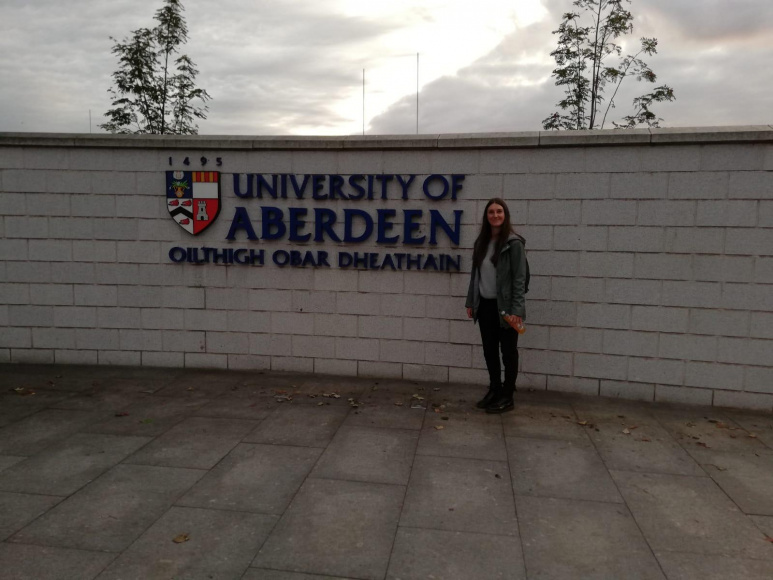My RIBES story: Miriam Castagna
Hello everyone!
My name is Miriam Castagna and I’m from Verona, a middle-sized town in the northern part of Italy. I've lived close to the city centre, but my connection with nature has always been very strong thanks to my parents’ origin: my mother comes from the countryside and my father is from a small village in the pre-Alps and I used to spend a lot of time in both my parents’ birthplaces during my childhood.
There, I’ve been made aware of the gradual deterioration of the mountain landscape due to the recklessness of tourists and inhabitants, inappropriately discharging solid waste into the environment causing contamination and clogging of natural springs. I grew up, and the intention of working in the environmental protection field got stronger and became a real goal to me.
After high school I decided to enrol at the University of Padova where I got my BSc in Environmental and Land Planning Engineering in 2017. After that, I continued my studies at the same University, to accomplish a MSc in Environmental Engineering – Soil Protection in 2020.
Thanks to the Environmental Hydraulics and the Water resources management classes I strengthened my interest and passion for the ecohydraulics field as I gained a deeper understanding of the inevitable connection between anthropogenic actions, river morphological changes and threats to water ecosystems and fish habitats. I realized that successful environmental protection requires the simultaneous contribution from both engineers and biologists because engineers have a deep understanding of processes and laws governing the physical world but, at the same time, they lack experience and knowledge about the organisms we share the environment with. Most of the time, in fact, human beings tend to modify nature to match their own needs without care of possible future implications for ecosystems, not only due to lack of knowledge but also because laws allow them to do that. This is due to that today’s legislation takes into account economical and human-safety related issues, but it still lacks the multidisciplinary view needed to effectively address the environmental issue. Thus, I resolved to choose the mitigation of impacts of man-made structures in rivers and the protection of aquatic organisms during their entire lifecycle and in a multidisciplinary perspective as my future professional focus. With this purpose in my mind, I decided to apply to the RIBES project.
I’ve never had the chance to be involved in field experiments involving fish before, so I am thrilled to have the opportunity to cooperate concretely in a research project aimed to find innovative solutions for freshwater fish protection, even though I know that it will be a highly challenging opportunity.
In these first months, I’ve been focusing on building up my basic knowledge on notions of fish physiology and fish locomotion, and on consolidating fluid mechanics theory. The research project aim is to explore and to advance knowledge about fish-flow interactions by visualization of the fluid velocity field surrounding a swimming fish. Fishes will be tested in different flow conditions trying to resemble the variety of flow regimes they are subjected to in natural rivers. Through the flow field reconstruction and visualizations we can draw further considerations on the forces acting on fish embedded in water, as well as a gain deeper clarity concerning existing dynamics among turbulent flows, forces and fish bioenergetics.
My hosting institution is the University of Aberdeen and the project is supervised by Prof. Vladimir Nikora together with Prof. Samuel Martin, Prof. Beth Scott, and Dr. Stuart Cameron.

Unfortunately, due to Covid restrictions I haven’t been able to meet my team and colleagues face to face yet, and I haven’t had the chance to see the laboratory and my workplace at the campus; thus, in 2021, I look forward to meet everyone in person and to begin the experimental part of the project.
